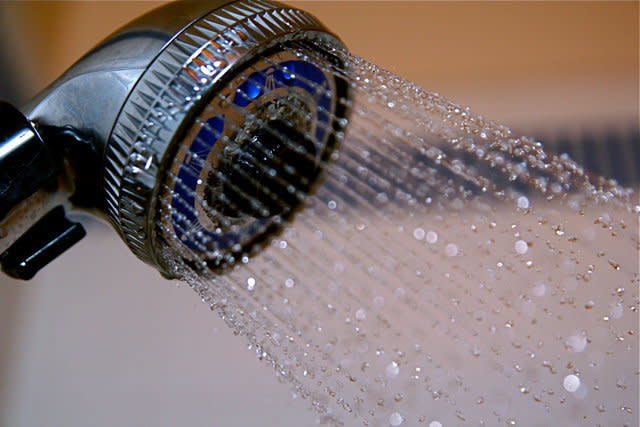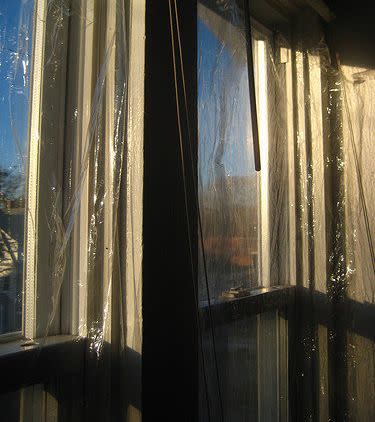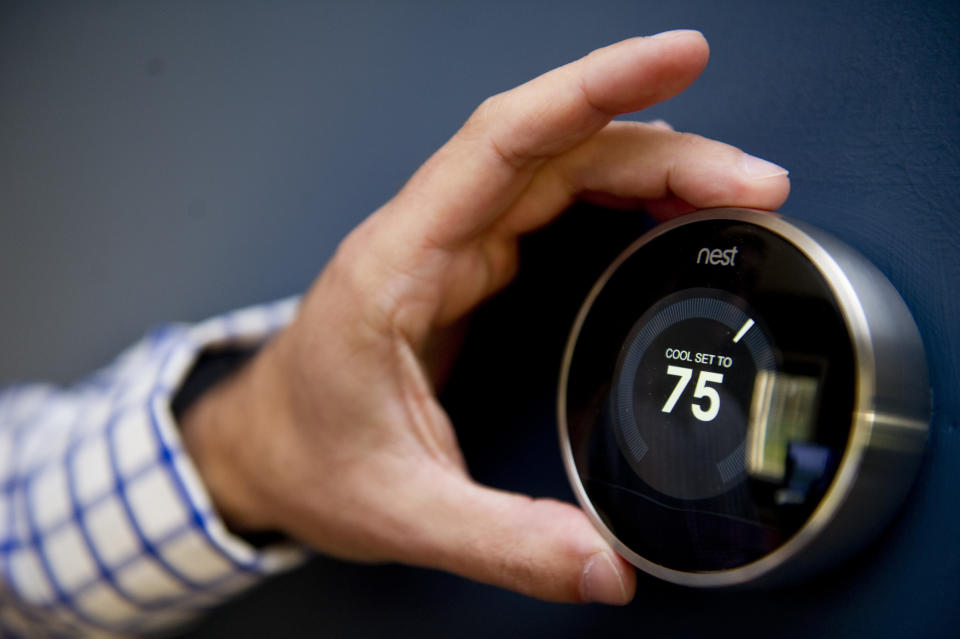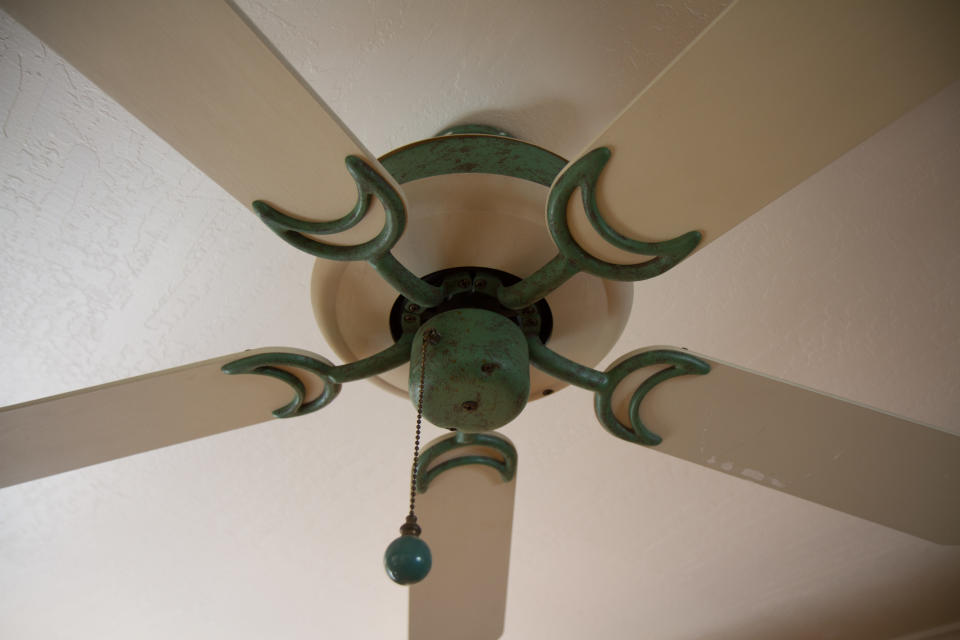Hilarious Grandma Poses In Real Estate Staging Photos, Becomes Hot Property
No, she doesn't come with the house.
Yolie Ball, an 86-year-old grandmother who's selling her home in Davenport, Florida, is now a hot property after posing in some adorable real estate photos. They went viral courtesy of a tweet from her granddaughter, Makenzie Ball. (Our personal favorite: peeking through the doorway.)
Love HuffPost? Become a founding member of HuffPost Plus today.
MY GRANDMA IS TRYING TO SELL HER HOUSE IN FLORIDA AND THESE ARE THE PICS I AM LAUGHING SO HARD pic.twitter.com/rONaIUyevS
— mak (@makball_) March 26, 2015
While BuzzFeed noted the staging pics weren't used in the actual listing, they have circulated faster than a realtor could dream, with tens of thousands of retweets (including one by Conan sidekick Andy Richter). And Ball is enjoying the attention.
“She’s just a very happy lady and it makes her ecstatic to make this many people smile!” Makenzie said to BuzzFeed.
According to Good Morning America, Ball's daughter Sandra was taking snaps for the listing when the grandmother decided to join the scenery. The results are pretty darn cute -- part photobomb-like and all adorable.
"If I had a dollar for every time someone tweeted me and said "LOL Does the grandma come with the house?" I would literally have $14,000," Makenzie wrote on Facebook.
Ball and her husband reportedly placed the house on the market about a month ago. "Hopefully after all this time the house will sell," the grandmother told AOL. "Not because we want to but because it's come to a stage in our life that our daughter is quite adamant that we be close to her."
So far, however, no buyer. "My grandma said a lot of people drove by while there were news crews outside," Makenzie told The Huffington Post on Tuesday. "The house is still on the market."
Low-Flow Shower Heads

Payback Time: Evolve claims its showerhead will pay for itself in two months time, and estimates an annual utility savings of about $250. Of course, how much you save depends on your water use, utility rates, and whether you sing "Happy Birthday" in the shower or "Bohemian Rhapsody."
(Photo by Steven Depolo/Flickr Creative Commons)
Plastic Window Wrap

Payback Time: A typical window insulation kit runs about $15 and will work on five windows. And it will easily pay for itself over the course of just one winter. Josh Peterson of TLC's How Stuff Works estimates you'll save $20 per window, or $100 total.
(Photo by Amanda Watson/Flickr Creative Commons)
Replacement Windows

Payback Time: The good news here is that the Energy Star forecasts big savings on replacement windows that earn its certification. You'll save anywhere from $126 to $465 a year for an area covering 2,000 sq. ft. On the downside, it could take roughly 10 years before you'll see a payback. The long timeframe, though, is mitigated by an immediate increase in comfort and visual aesthetics to your home. And if you're handy enough to install your own windows, you could cut the up-front costs by at least 25%.
(Photo by Kevin Clark/The Washington Post/Getty Images)
Learning Thermostats

Payback Time: Nest offers an approximation of savings based on your home's square footage, type of heat used, and whether you use central air. By a very conservative estimate, a Nest thermostat will completely pay for itself in five years. But the timeframe might pass as quickly as 18 months, depending on how closely you stick to a schedule for heating and cooling your home that makes maximum use of the Nest's digital technology.
(Photo by Ann Hermes/The Christian Science Monitor via Getty Images)
Attic Insulation

Payback Time: Get out your slide rules, kids. The U.S. Department of Energy has an insulation payback equation, but like many things associated with the government, it's complicated. Feel free to try it, but you'll need to know not just the cost of your energy and the cost of insulation, but also the efficacy rating of your heating system, the R values of your new and current insulation, and the air-speed velocity of an unladen swallow, to quote Monty Python. Or, you can trust CoolCalifornia.org's forecast that insulating your attic should pay for itself in about two to three years.
(Photo by Brett and Sue Coulstock/Flickr Creative Commons)
Ceiling Fans

Payback Time: If you adjust your thermostat in accordance with ceiling fan use, you'll save a minimum of 10% off your heating and cooling costs. The trick is not to run the fan and your air (or heat) at full blast, but to raise your thermostat in the summer, and lower it in the winter, letting the ceiling fan do the work. Assuming it takes two $50 ceiling fans to cover your main living space, and your energy costs average $150 a month, you'll see payback within seven months.
(Photo by Eugene Kim/Flickr Creative Commons)
Refrigerators

Payback Time: Once again, EnergyStar.gov has a calculator to help you calculate how long it'll take for you new refrigerator to pay for itself. Assuming that your old fridge is from 1980-1989, and measures about 20 cu. ft., you'll save $150 a year operating a new Energy Star fridge. Assuming you can pay $900 or less for the replacement, payback time is six years away.
(Photo by U.S. Department of Agriculture/Flickr Creative Commons)
This article originally appeared on HuffPost.

